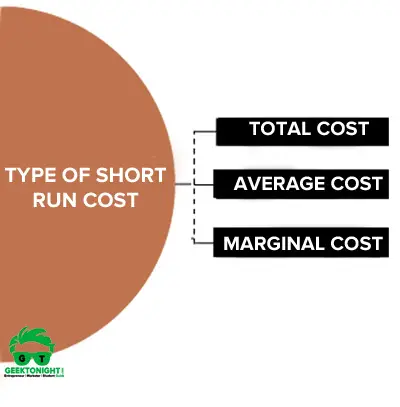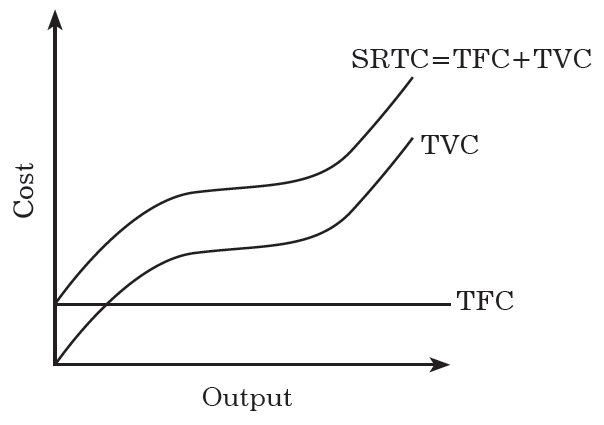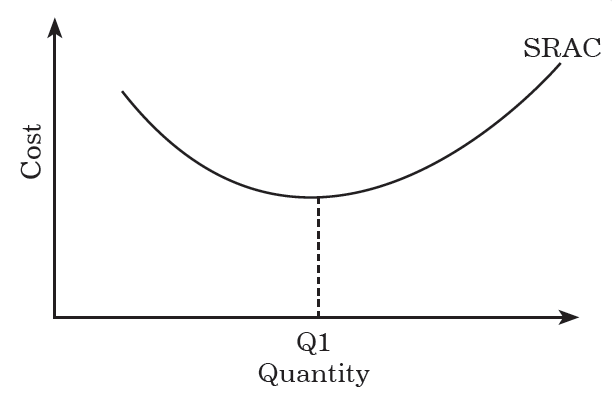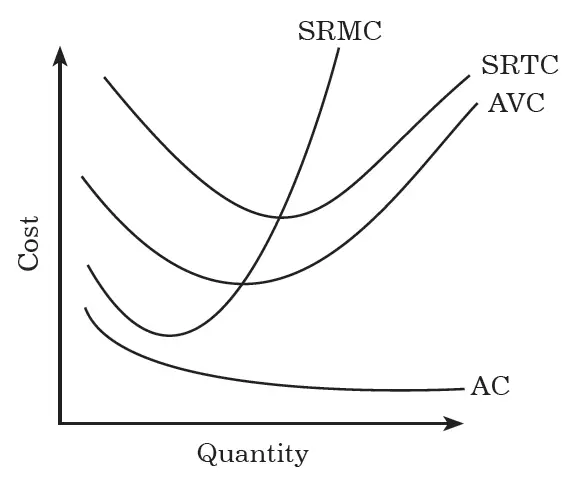What is Short Run Cost?
Short Run Cost refers to a certain period of time where at least one input is fixed while others are variable.
In the short-run period, an organisation cannot change the fixed factors of production, such as capital, factory buildings, plant and equipment, etc. However, the variable costs, such as raw material, employee wages, etc., change with the level of output.
Table of Content [Show]
Example: If a firm intends to increase its output in the short run, it would need to hire more workers and purchase more raw materials. The firm cannot expand its plant size or increase the plant capacity in the short run.
Similarly, when demand falls, the firm would reduce the work hours or output, but cannot downsize its plant. Therefore, in the short run only variable factors are changed, while the fixed factors remain unchanged. Let us discuss the cost-output relations in the short run
Read: Production in Economics
Type of Short Run Cost
What is Short Run Cost Types? There are basically three types of short run costs:

Short Run Total Cost
The total cost refers to the actual cost that is incurred by an organisation to produce a given level of output. The Short-Run Total Cost (SRTC) of an organisation consists of two main elements:
Total Fixed Cost (TFC): These costs do not change with the change in output. TFC remains constant even when the output is zero. TFC is represented by a straight line horizontal to the x-axis (output).
Total Variable Cost (TVC): These costs are directly proportional to the output of a firm. This implies that when the output increases, TVC also increases and when the output decreases, TVC decreases as well.
SRTC is obtained by adding the total fixed cost and the total variable cost.
SRTC = TFC + TVC
As the TFC remains constant, the changes in SRTC are entirely due to variations in TVC.
Figure depicts the short run cost curve of a firm:

Short Run Average Cost
The average cost is calculated by dividing total cost by the number of units a firm has produced. The short-run average cost (SRAC) of a firm refers to per unit cost of output at different levels of production. To calculate SRAC, short-run total cost is divided by the output.
SRAC = SRTC/Q = TFC + TVC/Q
Where, TFC/Q =Average Fixed Cost (AFC) and
TVC/Q =Average Variable Cost (AVC)
Therefore, SRAC = AFC + AVC
SRAC of a firm is U-shaped. It declines in the beginning, reaches to a minimum and starts to rise.
Figure depicts the short run average cost curve of a firm

The SRAC curve represents the average cost in the short run for producing a given quantity of output. The downward-slope of the SRAC curve indicates that as the output increases, average costs decrease. However, the SRAC curve begins to slope upwards, indicating that at output levels above Q1, average costs start to increase.
Short Run Marginal Cost
Marginal cost (MC) can be defined as the change in the total cost of a firm divided by the change in the total output. Short-run marginal cost refers to the change in short-run total cost due to a change in the firm’s output.
SRMC = ∅SRTC / ∅Q
In the marginal cost concept, Δ Q = 1. Therefore, SRMC = TVC
Short-run marginal cost on a graph is the slope of the short-run total cost and depicts the rate of change in total cost as output changes. The marginal cost of a firm is used to determine whether additional units need to be produced or not. If a firm could sell the additional unit at a price greater than the cost incurred to produce the additional unit (marginal cost), the firm may decide to produce the additional unit.
Table shows the estimation of SRTC, SRAC, and SRMC of a firm producing paper bags. Quantity expressed is in thousands (‘000) and the cost in ` (in lakhs):
| QUANTITY (Q) | FIXED COST (TFC) | TOTAL VARIABLE COST (TVC) | TOTAL COST (SRTC = TFC + TVC) | AVERAGE COST(SRAC=TC/Q) | MARGINAL COST (SRMC= ΔTC/Δ Q) |
|---|---|---|---|---|---|
| 20 | 10 | 15 | 25 | 1.25 | – |
| 21 | 10 | 20 | 30 | 1.43 | 5 |
| 22 | 10 | 10 | 20 | 0.91 | 10 |
| 23 | 10 | 12 | 22 | 0.96 | 2 |
Calculation of SRTC, SRAC and SRMC
The figure depicts the Short Run Marginal Cost curve of a firm:

The short-run marginal cost (SRMC), short-run average cost (SRAC) and average variable cost (AVC) are U-shaped due to increasing returns in the beginning followed by diminishing returns. SRMC curve intersects SRAC curve and the AVC curve at their lowest points.
Leave a Reply